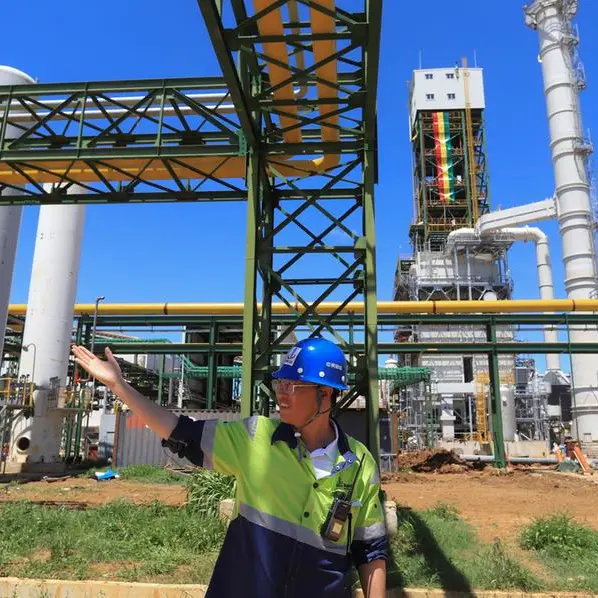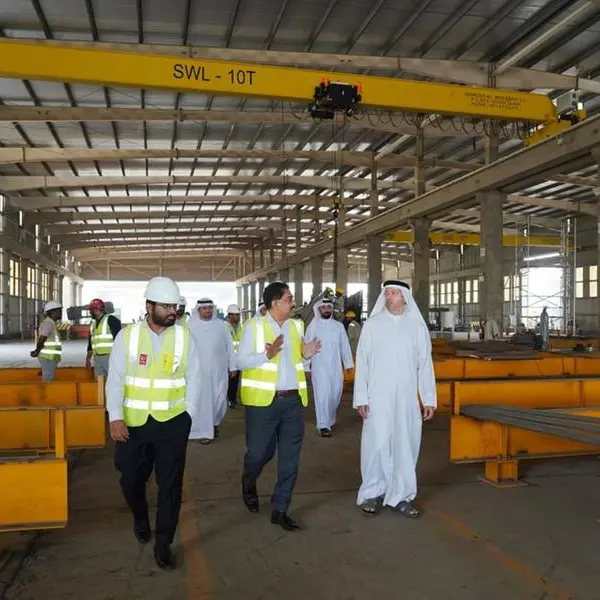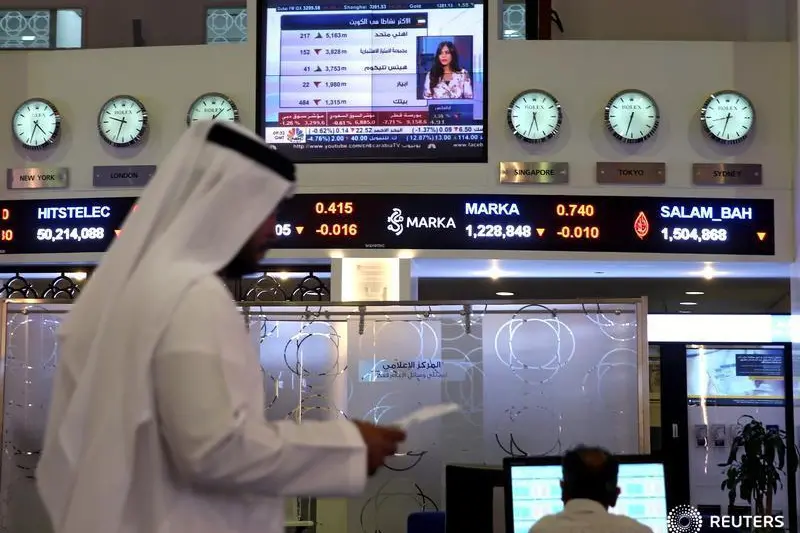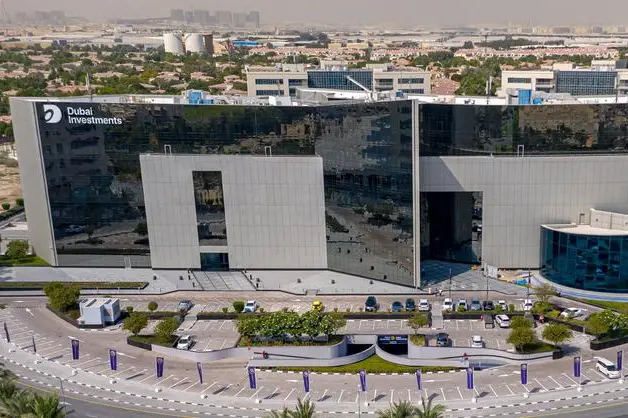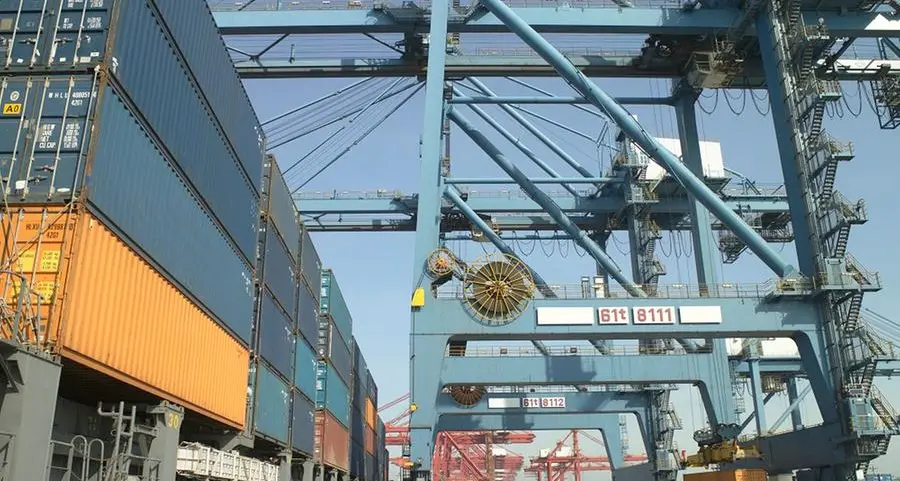Caspian Sea Region Pipelines – Existing and Proposed
The accompanying map (see Page 28) was prepared exclusively for MEES by ILF Consulting Engineers (ILF Beratende Ingenieure GmbH), Werner-Eckert Strasse 7, 81829 Munich, Germany. Tel: +49 89 2555940. Email: postmaster@ muc.ilf.com. Website: www.ilf.com
1. Nabucco Gas Pipeline. Conceived as a way to supply Caspian and Middle Eastern natural gas to Southeast and Central Europe, reducing EU dependence on Russia for gas supplies, Nabucco has yet to secure a gas source, but Azerbaijan is expected to be a prime supplier when Stage 2 of the offshore Shah Deniz gasfield comes on-stream in 2013. Nabucco Gas Pipeline International is a six-member consortium: Austria’s OMV (project leader), MOL Natural Gas Transmission Company of Hungary, SNTGN Transgaz SA of Romania, Bulgargaz EAD of Bulgaria, Petroleum Pipeline Corporation (Botas) of Turkey and RWE Gas Midstream of Germany, each holding 16.67%. The 3,300km, 31 bcm/year-capacity gas pipeline will start in central-eastern Turkey and run to the Central Europe Gas Hub (CEGH) in Baumgarten, Austria. Potential suppliers include Iran, Iraq, Egypt, Turkmenistan and Russia. Construction of the €5bn project is expected to begin in 2010 and the start-up date has recently been set back to 2013 from 2012.
2. AMBO – Albanian Macedonian Bulgarian Oil Corporation. Proposed as a bypass to Turkey’s Bosphorus and Dardanelle Straits it has been on the drawing board since the mid-1990s. Construction is expected to begin in late-2008 and the target date for operating is 2011. The 900km crude oil pipeline (750,000-900,000 b/d capacity) will cost $1.2-1.5bn and carry Russian and Caspian Sea crude oil from the Black Sea port of Burgas, Bulgaria, to Albania’s deepwater Adriatic port of Vlore.
3. BAP – Burgas-Alexandroupolis Crude Oil Pipeline (BAPline). Construction of the 279km crude oil pipeline is due to begin in 2008. The Russian, Greek and Bulgarian partners began forming an international project company in December 2007. Russia’s Transneft will operate the pipeline with a 51% interest shared with Gazprom and Rosneft. Greek and Bulgarian interests will each hold 24.5%. The pipeline, designed to by-pass Turkey’s Bosphorus and Dardanelle Straits, will carry primarily Russian crude oil. It will have an initial capacity of 700,000 b/d, rising eventually to 1mn b/d. The €1bn project is will come into operation in 2010.
4. Trans Anatolian Crude Oil Pipeline. Turkey’s proposal to by-pass the Bosphorus and Dardanelle straits is known as Samsun-Ceyhan or the Trans Anatolian (Anadolu) Pipeline (TAP). Construction began in April 2007, undertaken by a joint venture between Turkey’s Calik Enerji and Italy’s Eni, the TAP Project Company (TAPPCO). The 550km/$1.5bn pipeline will run from Turkey’s Black Sea port of Samsun to the port of Ceyhan on the Mediterranean, carrying 1.5mn b/d of Caspian Sea region and possibly Russian crude oil. Samsun-Ceyhan, competing with the Russian-backed BAPline through Bulgaria and Greece, is part of Turkey’s plan to route regional crude oil exports through Ceyhan in order to establish it as an eastern Mediterranean crude oil market hub. Ceyhan is the terminal for the 1mn b/d BTC pipeline and the Iraq-Turkey Pipeline (ITP), which carries Iraqi crude oil exports from Kirkuk.
5. BTC – Baku-Tbilisi-Ceyhan Crude Oil Pipeline. Operating since July 2006, the 1,768km BTC pipeline carries Azeri Light crude oil from Sangachal, Azerbaijan, to Ceyhan via Georgia. The $3.9bn pipeline, which runs 249km in Azerbaijan, 443km in Georgia and 1,076km in Turkey, is owned and operated by BTC Company, led by BP, which also leads the Azerbaijan International Operating Company (AIOC), the consortium that holds Azerbaijan’s offshore Azeri-Chirag-Guneshli (ACG) production-sharing agreement. In June 2007, BP said throughput had reached 800,000 b/d. Crude oil production at the ACG oilfields is expected to reach 1mn b/d before the end of the decade. Azerbaijan has signed an agreement with Kazakhstan allowing for the shipment of up to 500,000 b/d of Kazakh crude through the BTC, beginning most likely when Kazakhstan’s offshore Kashagan oilfield comes on-stream in approximately 2009. Depending on future throughput demand, which is expected, the BTC could be expanded to 1.2-1.6mn b/d.
6. SCP – South Caucasus Gas Pipeline. Also known as the Baku-Tbilisi-Erzurum gas pipeline, this is the first major gas pipeline exporting from the Commonwealth of Independent States (CIS). It carries natural gas produced at Azerbaijan’s offshore Shah Deniz gasfield along a route parallel to the BTC as far as the Turkish border (692km), from where it will connect with a Botas-operated pipeline to Turkey’s gas hub in Erzurum. Caspian Sea gas will be incorporated into Turkey’s gas network with some being shipped to Greece via the Interconnector-Greece-Turkey (IGT) and eventually into Italy via the Interconnector-Greece-Italy (IGI) pipeline. Deliveries to Turkey began in December 2007-January 2008. Shah Deniz gas is also expected to supply the proposed Nabucco gas pipeline to Central Europe through the SCP. Condensate produced at Shah Deniz will be exported through the BTC. Both the Shah Deniz and ACG fields will use the processing plant at Sangachal, Azerbaijan. SCP has 20 bcm/year design capacity and initial shipments will be around 11 bcm/year. The pipeline will likely be expanded during its 30-year life as the Shah Deniz gasfield is developed further. The South Caucasus Pipeline Company (SCPC) owns and operates the pipeline, BP is technical operator and StatoilHydro commercial operator. The cost for Stage 1 of the Shah Deniz project is estimated at around $4.3bn, of which the SCP costs about $1.02bn.
7. East Anatolian Natural Gas Pipeline. Linking Iran and Turkey, it came into operation in December 2001 after several years of delay. It runs from Tabriz to Turkey’s Erzurum gas hub. The gasline stems from a 22-year gas sales and purchase agreement signed in 1996 whereby Turkey agreed to purchase billions of cubic meters of natural gas from Iran. There have been several disagreements between the two parties regarding price, volume of shipments and quality of the gas. Under the original deal, gas shipments were to reach a volume of 10 bcm/year by 2007. Current shipments are estimated at around 22mn cu ms/day. During the last three winters, Iran has halted shipments to meet domestic demand. It is through the East Anatolian Pipeline that Iran anticipates participation in the proposed Nabucco pipeline.
8. Atyrau-Samara Crude Oil Pipeline. Prior to the CPC pipeline’s inauguration in 2001, the Atyrau-Samara pipeline was Kazakhstan’s prime crude oil export route. It is part of the Soviet-era system controlled by Transneft. The pipeline (340,000 b/d capacity) feeds into Russia’s primary crude oil export conveyor to Europe, the 1.2mn b/d Druzhba pipeline.
9. Druzhba-Wilhemshaven Crude Oil Pipeline. It has been proposed that the northern branch of the Russian Druzhba crude oil pipeline be extended from Schwedt on the Polish-German border to the German North Sea port of Wilhemshaven, reducing tanker traffic in the Baltic Sea and enhancing Russia’s capability to export crude to the West. Wilhemshaven can accommodate large tankers for crude oil exports to North America. This extension could also provide a Western European/North American outlet for crude oil shipped through the proposed Odessa-Brody-Plock pipeline. The extension would cover 1,800km and cost $2.5bn. Capacity would be initially 500,000 b/d, later rising to 1mn b/d.
10. Baku-Supsa Crude Oil Pipeline. Also known as the Western Route Export Pipeline (WREP), it was the prime export route for Azerbaijani crude oil prior before BTC’s opening in July 2006. This was a Soviet-era pipeline, renovated in the late-1990s and put in operation in 1998 by the Azerbaijan International Operating Company (AIOC) to export Azeri Light crude oil produced at Azerbaijan’s offshore Azeri-Chirag-Guneshli (ACG) oilfields. The 155,000 b/d capacity pipeline cost $560mn to refurbish. Baku-Supsa was closed by operator BP in early November 2006 for maintenance and has yet to be reopened. According to BP, the pipeline will reopen during 2008 and be used to export ACG crude oil.
11. Caspian Pipeline Consortium (CPC). Runs 1,510km from Tengiz in western Kazakhstan to the Russian Black Sea port of Novorossysk. The pipeline was conceived in the late 1990s to transport oil produced at the Chevron-operated Tengiz oilfield to international markets. Phase 1 cost $2.6bn and CPC began operations in October 2001 (design capacity 560,000 b/d). In recent years more shippers (including Russian) have joined the CPC pushing throughput at times above 800,000 b/d. Rising crude oil production in Kazakhstan prompted private shareholders to propose that Phase 2 should expand capacity to 1.3mn b/d. But Russia (main shareholder with 24%) has opposed the expansion on economic and political grounds and made a number of demands that it insists be met before endorsing the plan. In September 2007, CPC shareholders accepted Russia’s demands to raise crude oil tariffs to $38/ton, restructure debt and revise the charter for CPC-R, which governs the operation of the pipeline in Russian territory. Steps to proceed with the expansion program have yet to materialize. Moscow has in the past linked CPC expansion with the construction of the BAPline bypassing the Bosphorus.
12. Odessa-Brody-Plock Crude Oil Pipeline. The Ukraine government completed the 500km/$500mn Odessa-Brody pipeline in 2001 with the aim of attracting Caspian Sea crude oil for transshipment to Europe. However, Ukraine was unable to find shippers, so in 2004 reversed the flow to allow the shipment of small volumes of Russian crude through Odessa. Ukraine has received the verbal support for the pipeline and the proposed extension to Plock from European countries and Caspian producer states, but the Odessa-Brody pipeline has yet to be put towards its original purpose. Ukraine’s government wants the pipeline eventually to carry crude oil into Central Europe and has drawn up a plan with Poland to extend it a further 600km to Plock, from where the crude oil could be transported to European refineries or to Wilhemshaven for export. In October 2007, the leaders of Ukraine, Poland, Lithuania, Georgia and Azerbaijan met in Vilnius and endorsed the plan to extend the pipeline to Plock and further to Gdansk. The Ukraine-Poland joint venture Sarmatia was expanded to include new members and instructed to proceed with the project, the cost of which is estimated at €500mn for the 600km project.
13. Atyrau-Kenkiyak-China Crude Oil Pipeline. When complete, this will run the entire length of Kazakhstan, some 3,000km from Atyrau near the Caspian coast to the Chinese border. The 450km/$160mn section between Atyrau and Kenkiyak was built by a joint venture between KazMunaiGaz and Chinese partner CNPC, and became operational in March 2003 with an initial capacity of 120,000 b/d. In December 2005, Kazakhstan and China inaugurated the 1,200km Atasu-Alashankou section of the pipeline (initial 200,000 b/d capacity), costing more than $800mn. Work on the 800km mid-section of the pipeline between Kenkiyak and Kumkol began in December 2007. As Kazakh crude oil production grows capcity will rise to 400,000 b/d.
14. Atyrau-Kuryk Crude Oil Pipeline. Kazakhstan’s state-owned KazTransOil operates a domestic pipeline between Aktau – from where some crude oil is exported – and Atyrau that runs north and feeds into the CPC. In November 2006, Kazakhstan said it would construct a new pipeline along the same route from Iskene in the north flowing south to Kuryk as part of a new trans-Caspian crude oil export system scheduled to come into operation in 2010. This system will involve the construction of an 800km pipeline, new terminals at Kuryk and in Azerbaijan and designated tankers to ferry Kazakh crude to Azerbaijan from where it will be exported via the BTC. Once exports hit 400,000-500,000 b/d, an underwater trans-Caspian crude oil pipeline will be considered. Consortium members in the development of the offshore Kashagan oilfield are expected to participate, and France’s Total has put forward a $4bn proposal for this export system.
15. Iraq-Turkey Pipeline (ITP).Also known as the Kirkuk-Ceyhan crude oil pipeline, it came into operation in 1977 and was expanded in 1987 during the Iran-Iraq war, allowing Iraq to export crude oil without risking tanker shipments through the Gulf. During the 1990 Iraqi invasion of Kuwait and the subsequent war, the ITP was closed and not used again until Iraqi crude oil was exported under the UN-sponsored oil-for-food scheme. Since the March 2003 US-led invasion of Iraq, the pipeline has continued to be used as an export route for crude oil produced in Iraq’s northern oilfields. However, insurgents have frequently destroyed sections of it. The ITP figures in Turkey’s plans to make Ceyhan an international oil, gas, and petrochemical export hub. The ITP (dual 1,000km pipelines, design capacity 1.6mn b/d) requires a complete refurbishment that is not expected to take place until a degree of peace returns to Iraq. Furthermore, unconfirmed speculation speaks of the possible construction of a natural gas pipeline to carry Iraqi gas to Ceyhan.
16. Trans-Caspian Gas Pipeline(Gas from Turkmenistan). With new leadership in Turkmenistan, fresh efforts are being made to revive the idea of a natural gas pipeline across the Caspian Sea to link up with Azerbaijan’s SCP gas pipeline to Turkey and then to Europe. The US and EU have discussed this topic with Kazakhstan, where gas production is expected to climb during the next 10 years in tandem with crude oil production. In the 1990s Shell led an unsuccessful project to build a 16-30 bcm/year gas pipeline across the Caspian from Turkmenistan to Azerbaijanm and it remains to be seen if the latest proposal will be realized. Since a new president came to power in Turkmenistan in February 2007, US and EU officials have encouraged the government to endorse a trans-Caspian gas pipeline, gas from which would likely be routed to the Nabucco gas pipeline project.
17. Trans-Adriatic Pipeline (TAP). The proposed gas pipeline is being promoted by the private Swiss company EGL to carry Russian, Caspian and Iranian gas through the Balkans to southern Italy. In February 2008 EGL and Norway’s StatoilHydro formed a 50:50 joint venture to build, own and operate the €1.5bn/520km gas pipeline. TAP would branch off from the Interconnector-Greece-Italy (IGI) gas pipeline in northern Greece, and cross Albania, where a 115km underwater pipeline would cross the Adriatic Sea and emerge in Italy near Brindisi. A final investment decision is expected during the second half of 2009, bringing the pipeline into operation in 2011. The Trans-Adriatic would have an initial capacity of 10 bcm/year and could later be expanded to 20 bcm/year.
18. Interconnector-Greece-Italy (IGI). Greece and Italy signed an agreement for the project in November 2005 to carry Caspian region natural gas, primarily from Azerbaijan’s Shah Deniz gasfield, across northern Greece to southern Italy. The pipeline will be an extension of the interconnecting pipeline between Turkey and Greece. That pipeline was completed in late 2007 with a design capacity of 11 bcm/year, extending from the Turkish gas grid near Bursa, across the Dardanelle Strait and Turkish Thrace to Komotini in northern Greece. Deliveries of Shah Deniz gas to Greece began in late 2007 at an initial rate of 250mn cu ms/y and will eventually rise to 3 bcm/year. The IGI will have an 8 bcm/y capacity and run 600km from Komotini to Stavrolimena, from where a 217km underwater section will cross the Ionian Sea to Oranto, Italy. Greece’s state-owned DEPA and Italy’s Edison have formed a 50:50 joint venture (Poseidon Company) to construct the €350mn sub-sea section. DEPA will build the northern Greece section for €600mn. The pipeline is to be operation by 2012.
19. Blue Stream Gas Pipeline. This was inaugurated in November 2005, after coming into operation in February 2003 at a cost of $3.2bn. It is designed to carry 16 bcm/year of Russian gas, but Turkey takes delivery of less than half that amount. The Blue Stream comprises three sections. The Russian section (370km) carries gas from Stavropol to Dzhubga on the Black Sea and the inland compression station at Krasnodar, was financed, built and is managed by Gazprom. The Black Sea section consists of two subsea pipelines 390km in length owned and operated by the Gazprom-Eni joint venture Blue Stream Pipeline Company. It runs from Dzhubga to Durusu on Turkey’s Black Sea coast near Samsun. The Turkish section, built and financed by Botas, runs 470km to Ankara, connecting with Turkey’s natural gas grid.
20. Trans-Caspian Crude Oil Export System. A sub-sea crude oil pipeline in the Caspian Sea connecting Kazakhstan and Azerbaijan is still at the early planning stage, but the project may in time need to be carried out (see Atyrau-Kuryk above). At present there are plans to construct new oil terminals to ship Kazakh crude oil to Azerbaijan where it would be exported via the BTC crude oil pipeline to Ceyhan. In November 2006, Kazakhstan said it would build a $1.6bn system involving a new pipeline from Iskene to Kuryk (the Kazakhstan Caspian Transportation System – KCTS) where a new loading terminal would be built. The new system, targeted for 2010, is viewed as part of the infrastructure required to export production from the offshore Caspian Kashagan oilfield and surrounding structures. The Kashagan concession is being developed by Agip KCO, a consortium led by Italy’s Eni – however, the consortium structure is expected to change in early 2008 following a renegotiation of the group’s agreement with the Kazakh government. In June 2006, Total, a member of the consortium, said the group was prepared to invest $4bn in an export system, including tankers, to ship Kashagan crude oil across the Caspian to Azerbaijan. A underwater pipeline across the Caspian is viewed as unfeasible until tanker shipments reach a level of 500,000 b/d.
21. South Stream Gas Pipeline. Russia announced a plan to build a second underwater gas pipeline across the Black Sea in June 2008. As with the Blue Stream gas pipeline, the project is to be carried out as a joint venture with Italy’s Eni. South Stream will run 900km across the Black Sea from southern Russia to Bulgaria reaching depths of more than 2,000ms. Russian gas monopoly Gazprom has signed joint venture projects with Bulgaria, Serbia and Hungary for the construction of pipelines across their territories. Gazprom has also purchased 50% of Austria’s Central Europe Gas Hub (CEGH) in Baumgarten. South Stream, viewed as a rival to the Nabucco project (see No 1 above), will have 30 bcm/year capacity. The underwater section is expected to cost €10bn. South Stream will transport gas from Russia, Turkmenistan and Kazakhstan. When first proposed, South Stream was to have had a northern and southern branch. So far, only agreements regarding the northern one have been made, but Greece has expressed interest in receiving gas through a southern branch. By constructing South Stream, Russia will be able to by-pass Ukraine and Turkey to reach EU markets.
22. Transalpine Pipeline (TAL). Built in 1967, it has capacity to carry more than 1mn b/d from the Italian Adriatic port of Trieste to Ingolstadt in Germany. The proposed Constanza-Trieste crude oil pipeline (Pan-European Oil Pipeline – PEOP) would connect with the TAL (see No 23 below).
23. Constanza-Trieste/Pan-European Oil Pipeline (PEOP).This was first proposed in the late 1990s and has been known by several names, notably Constanza-Trieste Pipeline Limited (CTPL) and South East European Line (SEEL). In April 2007, Romania, Serbia, Croatia, Slovenia and Italy signed an intergovernmental agreement, with EU backing, declaring their intention to build the PEOP (1,300-1,400km, 1.2-1.8mn b/d capacity), with crude oil supplied by Caspian producers. The $3.5bn project would begin operating in 2012. Consideration has been given to extending the pipeline from Trieste, from where crude oil could be shipped to Austria, Germany and the Czech Republic, and possibly to Genoa and Marseille.
24. White Stream Gas Pipeline. The Georgia-Ukraine-European Union (GUEU) White Stream gas pipeline project would carry natural gas from Caspian sources (Azerbaijan and Turkmenistan) to Ukraine, or directly to EU-member Romania via an underwater gas pipeline across the Black Sea. Ukraine is supporting the project as it would greatly reduce the country’s reliance on gas supplies from Turkmenistan through Russia’s gas pipeline network. There are two proposed routes for White Stream. Both call for a 115km pipeline to diverge from the SCP gas pipeline in central Georgia and extend to the Georgian Black Sea coast. From there a 630km underwater pipeline would connect with Ukraine’s Crimean Peninsula. A 215km onshore section would cross the Crimea and then a 395km underwater pipeline would carry on to Romania. The second option calls for an underwater pipeline running the entire breadth of the Black Sea between Georgia and Romania. Phase 1 ($4bn) would carry an initial 8 bcm/year of Shah Deniz gas, Phase 2 would expand capacity to 16 bcm/year and Phase 3 raise it to 32 bcm/year.
25. Pricaspiysky Gas Pipeline. This is part of an agreement finalized in December 2007 by Russia, Kazakhstan and Turkmenistan, viewed as a move by Russia to secure natural gas supplies from Turkmenistan and to also prevent a trans-Caspian gas pipeline project from taking shape. Under the agreement, Russia will build a new 20 bcm/year-capacity gas pipeline parallel to the western branch of the Central Asia Center-3 (CAC-3) gas pipeline along the Caspian coastline in Turkmenistan. CAC-3 begins at the Belek compression station at Belek near Turkmenbashi and then travels north to Bekdash and on to Beyneu in Kazakhstan where it joins with other CAC pipelines, which continue from there to Alexandrov Gay in Russia. Moscow has also agreed to revamp most of the CAC pipeline system.
26. Turkmenistan-China Gas Pipeline. Not shown on the map is the Turkmenistan-China gas pipeline, construction of which has started. The pipeline will run some 7,000km across Central Asia beginning in eastern Turkmenistan and crossing Uzbekistan and Kazakhstan. Turkmenistan has an agreement to supply China with 30 bcm/year of natural gas for 30 years. The pipeline is due for completion in 2009.


